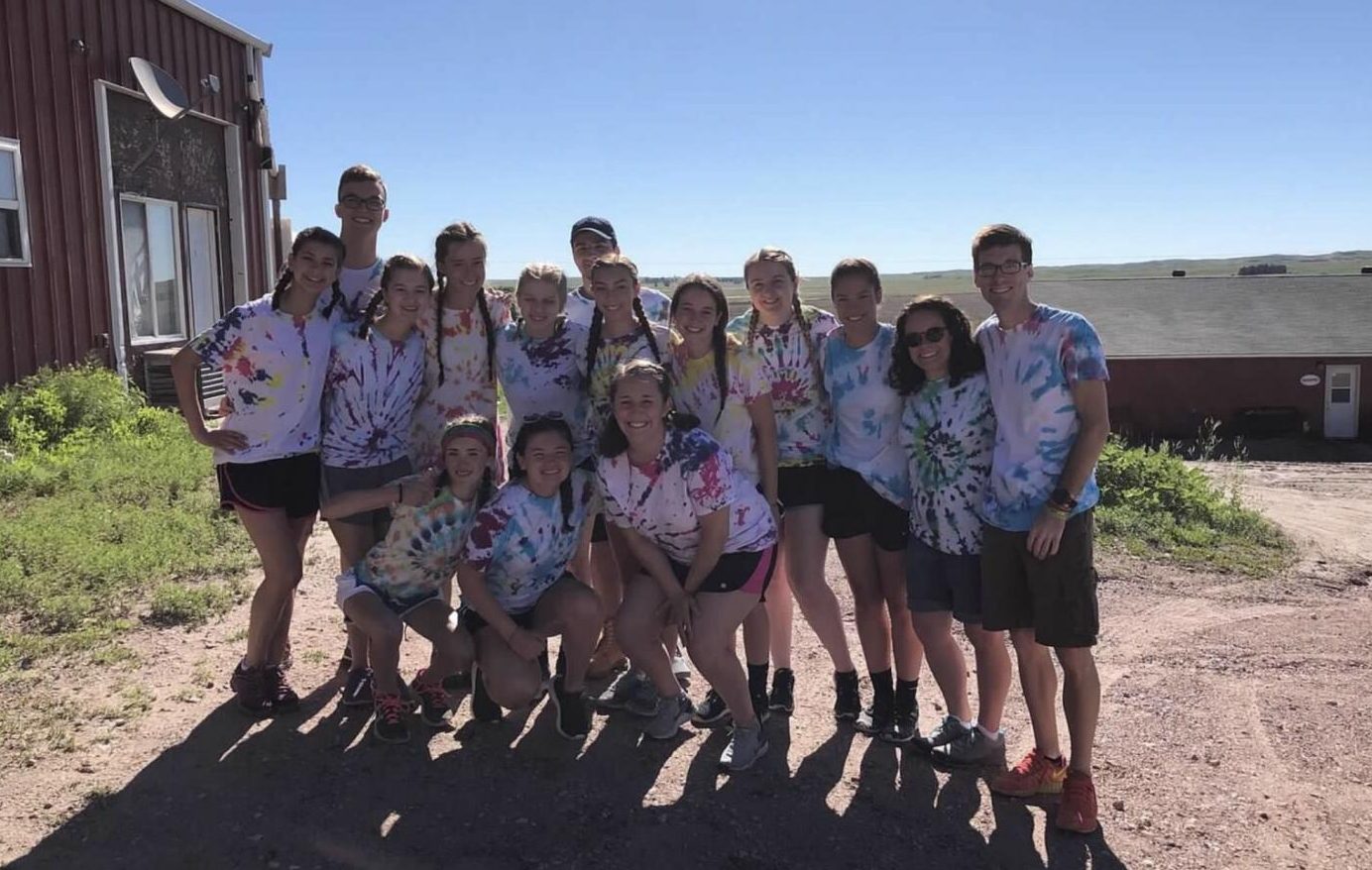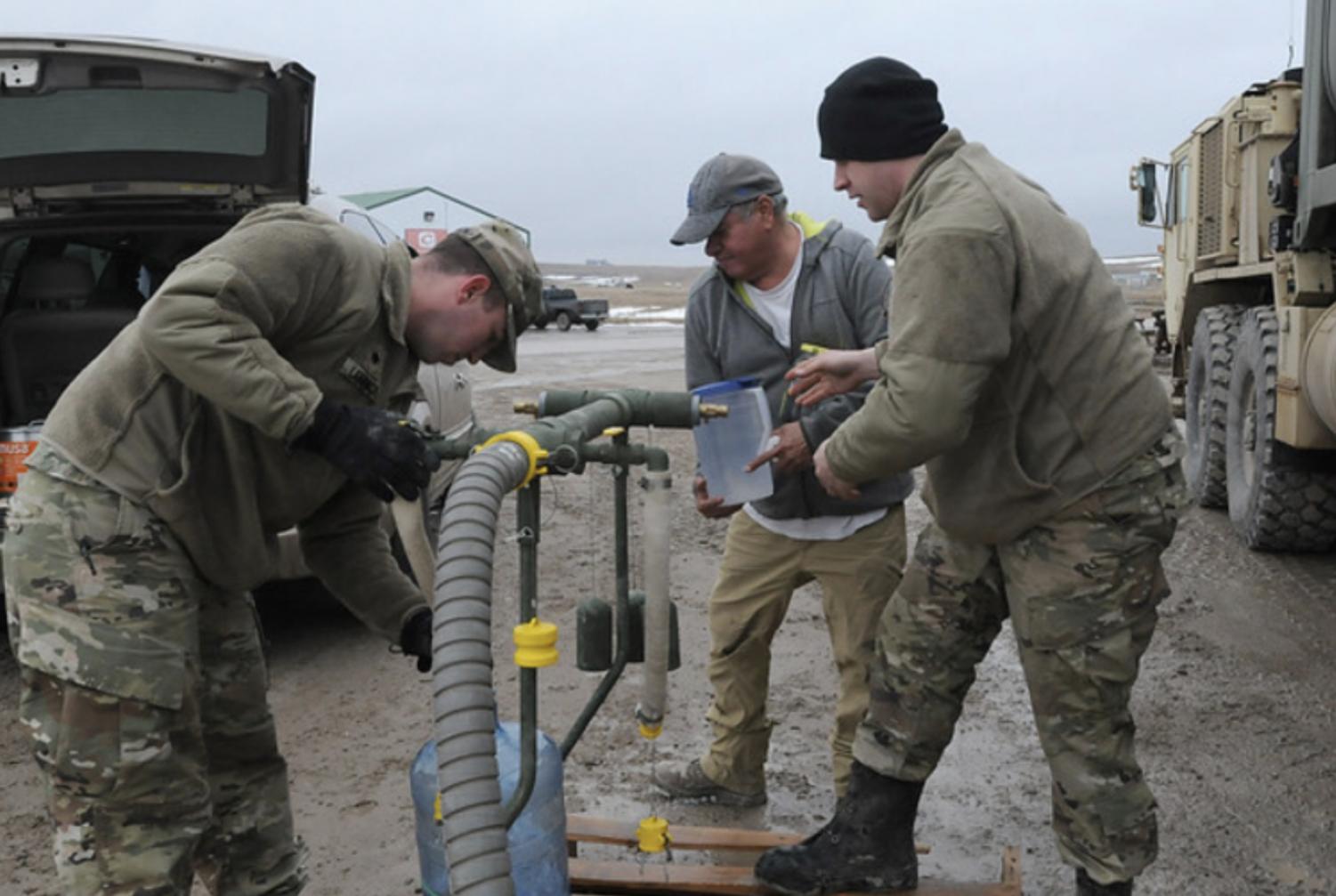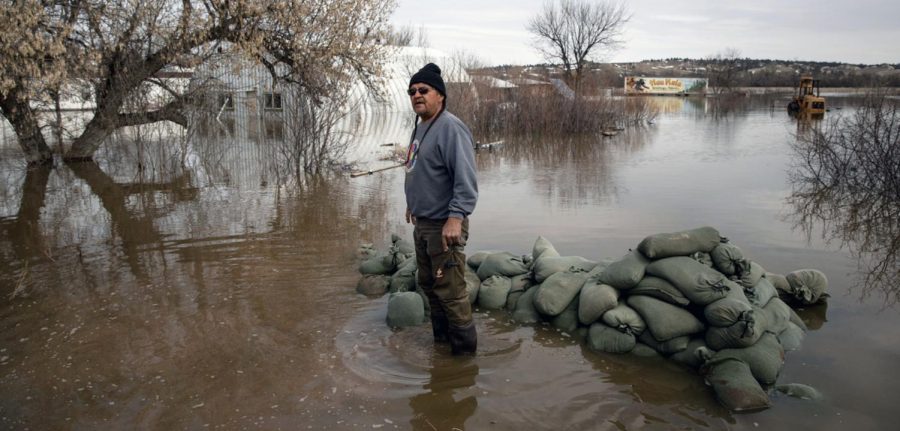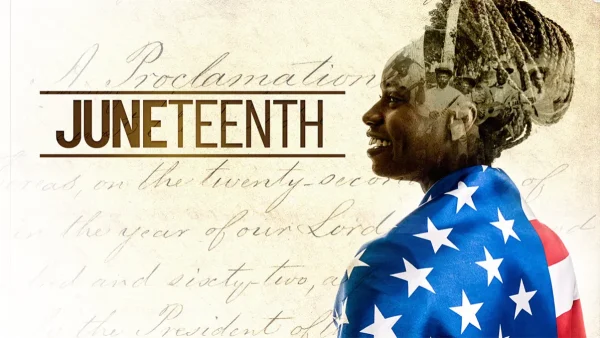Pine Ridge floods wreak havoc on Native American community
Photo courtesy of The Intercept, Kristina Barker
At Pine Ridge Indian Reservation, S.D., Henry Red Cloud surveys the damage done by the spring 2019 flooding.
Pine Ridge Reservation in South Dakota has undergone severe flooding, creating a “humanitarian crisis” for the 20,000 members of the Oglala Sioux Tribe, The Smithsonian reported. In March, 8,000 Native American people were left without access to water, and countless others have been forced to leave their homes.
“[Pine Ridge Reservation is] already underfunded and strapped for resources,” said the region’s state representative, Peri Pourier. “We’re already in survival mode every day.”
Walsh Jesuit has a special relationship with the people of Pine Ridge Reservation. For the past six years, students have been traveling to volunteer and learn about the reservation. Principal Fr. Mark Carr, S.J. worked at the Red Cloud Indian School on the reservation from 2005 to 2007 as a theology teacher and campus minister.

Walsh Jesuit travels to Pine Ridge over the summer, providing volunteer services for the Oglala Sioux and an educational experience for the students.
“[Pine Ridge] is an area that is often ignored by the rest of the country,” Fr. Carr said. “[The flooding] is much more impactful out there than it is here.”
Similarly, Director of Campus Ministry Mr. Tim Dunn acknowledged the devastating effects the flooding could have on the reservation. With unemployment at 75%, the majority of residents living in trailers, and having only unpaved roads and minimal resources, the natural disaster becomes “exponentially harder.”
“The flood not only displaces people from their homes, it jeopardizes their safety,” Mr. Dunn stated.
While Pine Ridge, one of the poorest regions in the country, is not the only area affected by flooding, it faced an even more difficult challenge due to a lack of aid and resources. Members of the Oglala Sioux have been working nonstop to address the destruction from the floods.
“If we would have had state-of-the-art equipment, if we would have had adequate manpower, we could have gotten a lot done,” said Julian Bear Runner, the president of the Oglala Sioux.
With a population of only 20,000, the 8,000 members of Pine Ridge still without access to water represent a significant percentage of the residents. Several areas remain accessible only by boat, helicopter, and horse, The Smithsonian reports. The recent flooding also raises awareness about the other challenges Pine Ridge Reservation faces.

The South Dakota National Guard attempt to restore drinking water to an area of the reservation on March 25. The main waterline failed after the floods arrived.
“If we had funding to fix our waterways, our infrastructure here; our dams have been built like 80 years ago — they’re outdated,” Pine Ridge resident Henry Red Cloud stated. “If funding was set in place, we wouldn’t be in the predicament that we are now.”
Incredibly, the reservation is bracing for possible life-threatening conditions on April 11 and 12, followed by more flooding.
ABC News cited an observation by Oglala Sioux spokesman Chase Iron Eyes: “On this reservation, it’s kind of a constant crisis the we live here, and these disasters just put us in a perilous position.”
If you are interested in donating to Pine Ridge Reservation during this time of need, Father Carr and Mr. Dunn recommend supporting the reservation’s school to ensure that local families receive direct help. There is a place to specify that these funds should be designated for damage from the floods.

Hi! My name is Adriana Brown and I am a senior and staff writer. I enjoy art and music, the outdoors, and cooking. I also love spending time with my family...






